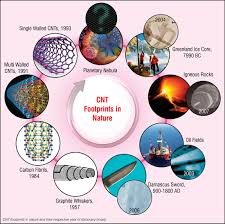
Breaking News
 Why Mamdani's socialist revolution in New York has sparked a civil war for Democrats...
Why Mamdani's socialist revolution in New York has sparked a civil war for Democrats...
 Tech tycoon whose parents fled communism offers six reasons NYC will become hellish dystopia...
Tech tycoon whose parents fled communism offers six reasons NYC will become hellish dystopia...
 NASA detects bizarre boost in interstellar visitor's speed as it moves toward Earth
NASA detects bizarre boost in interstellar visitor's speed as it moves toward Earth
 Britain "Doomed" Under Labour As Wealthy Scramble To "Get The Hell Out Of London
Britain "Doomed" Under Labour As Wealthy Scramble To "Get The Hell Out Of London
Top Tech News
 Japan just injected artificial blood into a human. No blood type needed. No refrigeration.
Japan just injected artificial blood into a human. No blood type needed. No refrigeration.
 The 6 Best LLM Tools To Run Models Locally
The 6 Best LLM Tools To Run Models Locally
 Testing My First Sodium-Ion Solar Battery
Testing My First Sodium-Ion Solar Battery
 A man once paralyzed from the waist down now stands on his own, not with machines or wires,...
A man once paralyzed from the waist down now stands on his own, not with machines or wires,...
 Review: Thumb-sized thermal camera turns your phone into a smart tool
Review: Thumb-sized thermal camera turns your phone into a smart tool
 Army To Bring Nuclear Microreactors To Its Bases By 2028
Army To Bring Nuclear Microreactors To Its Bases By 2028
 Nissan Says It's On Track For Solid-State Batteries That Double EV Range By 2028
Nissan Says It's On Track For Solid-State Batteries That Double EV Range By 2028
 Carbon based computers that run on iron
Carbon based computers that run on iron
 Russia flies strategic cruise missile propelled by a nuclear engine
Russia flies strategic cruise missile propelled by a nuclear engine
 100% Free AC & Heat from SOLAR! Airspool Mini Split AC from Santan Solar | Unboxing & Install
100% Free AC & Heat from SOLAR! Airspool Mini Split AC from Santan Solar | Unboxing & Install
25+ year journey to superstrong carbon nanotube bundles

Nanotube research accelerated greatly following the independent discoveries by Bethune at IBM and Iijima at NEC of single-walled carbon nanotubes and methods to specifically produce them by adding transition-metal catalysts to the carbon in an arc discharge.
It has been very difficult to make larger amounts of carbon nanotubes and to make them longer. It has been even more difficult to combine lots of carbon nanotubes and make the combined material close to the strength of individual carbon nanotubes.
In 2008, it was found individual CNT shells have strengths of up to ≈100 gigapascals (15,000,000 psi). Although the strength of individual CNT shells is extremely high, weak shear interactions between adjacent shells and tubes lead to significant reduction in the effective strength of multi-walled carbon nanotubes and carbon nanotube bundles down to only a few GPa.



